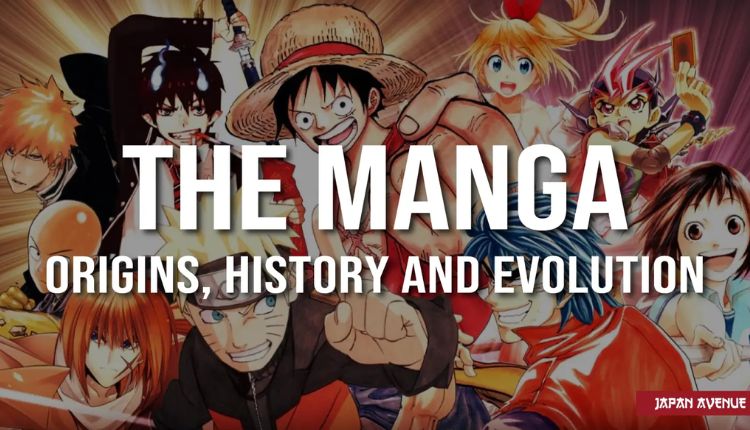Rooted in traditional manga and anime styles, Anime hentai comics pay attention to grown-up issues and often blur the lines between fantasy and art. While the style may not be attractive to everybody, it’s a widespread part of the anime industry and has evolved into a unique artistic and cultural phenomenon.
Origins and Evolution of Hentai in Anime Comics
The idea of Anime hentai comics, which loosely translates to “perversion” or “abnormality” in Japanese, at the beginning emerged from Japan’s lengthy records of erotic artwork. Edo-period shunga woodblock prints showcased explicit imagery, similar to present-day hentai.
With the upward push of manga and anime in the 20th century, artists commenced integrating personal content into illustrated narratives, growing what’s now called hentai comics. These works range from light-hearted romantic erotica to more expressive, fantastical memories.
Artistic Style and Storytelling in Hentai Comics
Anime hentai comics are remarkable for their distinct art style, which commonly features exaggerated emotions, vibrant colors, and relatively special male or female designs. Despite their personal content material, many hentai comics make widespread attempts at storytelling, regularly including difficult plotlines, character development, and emotional depth. These stories may additionally explore taboo subjects, opportunistic relationships, or imaginative science fiction settings, providing more than simply visible enchantment.
Popular Themes and Subgenres in Anime Hentai Comics
Within the huge class of anime hentai comics, there exists an extensive range of subgenres catering to exclusive tastes. Some focus on romantic relationships with mild, emotionally driven narratives, while others explore myth or science fiction elements regarding mythical beings or futuristic situations.
Subgenres like yuri (woman/lady), yaoi (male/male), futanari (characters with each male and lady anatomy), and tentacle hentai have emerged as iconic within the community, each with its own fanbase and artistic conventions.
The Appeal of Hentai Comics to Global Audiences
The global enchantment of Anime hentai comics has grown rapidly because of the global reputation of anime and manga in the wider public. As virtual platforms increase, fanatics from around the sector have smooth access to translated hentai comics and fan-created content. For many, the appeal lies within the aggregate of emotional storytelling, inventive splendour, and erotic delusion. Others recognise the innovative freedom hentai offers because it frequently explores topics that mainstream Western erotica tends to avoid or censor.
Legal and Ethical Considerations in Hentai Content
Despite its reputation, the hentai style isn’t without controversy. Legal regulations surrounding hentai comics vary drastically from country to country. Some countries ban certain types of content material outright, specifically depictions that contain non-consensual acts or underage characters, even when portrayed in fictional or stylised methods. Ethical debates additionally arise about the normalisation of severe issues in the media. While some shield hentai as in simple terms fantasy and inventive expression, others argue for clearer limitations and duty.
The Role of the Internet and Digital Platforms
The rise of the internet has dramatically modified how hentai comics are distributed and consumed. Online forums, websites, and social media systems have enabled artists to share their paintings globally, frequently bypassing conventional publishers. Digital marketplaces now provide thousands of Anime hentai comics, each paid and free, with genres and issues catering to each achievable choice. Fan translation communities have also played a crucial role in making Japanese hentai content available to non-Japanese speakers.
Community and Fandom Around Anime Hentai Comics
Hentai comics have a colourful and passionate global community. Fans create and share fan art, write fan fiction, and engage in discussions about preferred characters, plots, or kinks. Online structures like Reddit, Discord, and dedicated hentai forums provide spaces in which fans join, proportion hints, and even collaborate on authentic content material. Cosplay, conventions, and fan events frequently consist of hentai-focused sections or vendors, in addition to highlighting the style’s impact.
Criticism and Misconceptions About Hentai Comics
Like many niche subcultures, hentai comics are frequently misunderstood by the overall public. They are sometimes brushed off as obscene or exploitative without consideration of their artistic or Anime hentai comics. Critics argue that hentai contributes to bad perceptions, whilst supporters emphasise its significance as a form of innovative expression. It’s critical to distinguish between consensual, centred fiction and dangerous actual-global behaviour. Education, open communication, and law can help ensure that the genre is loved responsibly.
Anime Hentai Comics as a Form of Artistic Expression
Beyond their explicit nature, Anime hentai comics represent a form of artistic expression that challenges traditional norms and explores the boundaries of imagination. Many hentai artists are professional illustrators who use the style to test with fashion, emotion, and human intimacy. For a few creators, hentai is a vehicle for addressing deeper psychological or emotional subject matters, from loneliness and obsession to attractiveness and myth. As such, it merits recognition within the broader panorama of personal media and graphic art.
The Future of Hentai Comics in Global Culture
The destiny of anime hentai comics looks dynamic and expansive. With technological improvements such as AI-generated artwork and virtual reality, the hentai realm is evolving swiftly. New storytelling codecs like interactive hentai video games or animated comics are gaining popularity.
As societal attitudes in the direction of media consumption continue changing, hentai comics may also benefit from broader acceptance as a valid and diverse form of entertainment. Simultaneously, the call for moral requirements, age verification, and content moderation will form how the enterprise matures.
Conclusion
Anime hentai comics are a complex and multifaceted genre that merges myth, storytelling, and uniquely. From their ancient roots in Japanese erotic art to their contemporary presence on global digital platforms, hentai comics continue to fascinate and divide audiences. Whether viewed as provocative art or debatable media, there’s no denying the impact hentai has made on anime tradition and adult entertainment. Understanding its nuances permits greater knowledge and respectful speech about its vicinity in global media.
